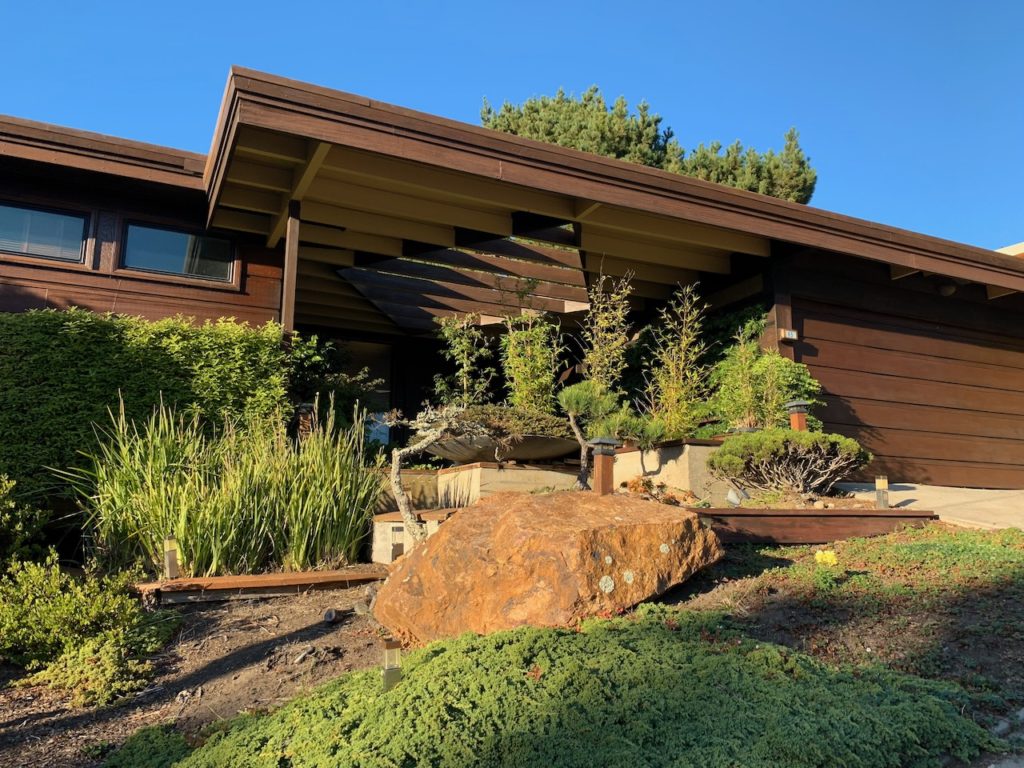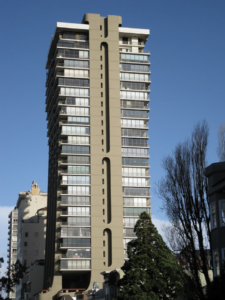Mid-Century Modern Homes in San Francisco
Sinatra fan or not, everyone loves the low-slung, open-style, welcome to the future from the imagination-of-the-past homes that were the native habitat of Mr. Sinatra and his 1950s crooning cronies. “Ol’ Blue Eyes” may be no more than a song, but the architecture lives on in one of California’s most enduring and popular home styles: mid-century modern.
While the Palm Springs area is known for their collection of mid-century modern homes you can enjoy these homes without getting heat stroke or moving to the desert. You can enjoy them right here in the 415, and here are things to consider during your mid-century home search:
This post is another in our “Housing Styles of San Francisco” blog series.
A Brief History of Mid-Century Modern Architecture
Mid-century modern design emerged after World War II in response to the need for inexpensive suburban homes for sale. During the 1930s and ’40s, Ludwig Mies van der Rohe and Walter Gropius – German devotees of the Bauhaus school of modern design – fled Germany to escape Nazism. They taught at US schools like the Illinois Institute of Technology and Harvard Graduate School of Design. Their work pioneered the international style of modernism, alongside other peers and luminaries like Frank Lloyd Wright, Le Corbusier, and Alvar Aalto.
The influence of these design giants laid the foundation for a mid-century design movement that would expand from the academy to reality. This modern movement eventually grew to include the design of wide swaths of contemporary homes for middle-class homeowners in the US, as well as taller buildings and landmarks in East Coast metros like New York City and West Coast cities like San Francisco and Los Angeles in California. Although the history of the mid-century modern style began in tragedy, it culminated in triumph.
Where Can I Find Mid-Century Modern Homes in San Francisco?
- Large mid-century Condo buildings are found in Russian Hill, Pacific Heights, and the Western Addition.
- Otherwise, you’ll find them sprinkled randomly through the neighborhoods in SF that had substantial residential development around this time: Miraloma Park, Midtown Terrace, Bernal Heights, Clarendon Heights, Golden Gate Heights, Sherwood Forest, and the Sunnyside.
- Diamond Heights has some mid-century modern single-family homes, and lots from the 1970s that mimic style but aren’t classified as such.
Mid-Century Condo or Mid-Century Single Family?
That’s right. Both are available. 999 Green, one of SF’s most stunning skyscrapers, was built atop Russian Hill by noted mid-century developer Eichler. In addition to 999 Green some other SF condo buildings:
- 875 Vermont
- 1170 Sacramento
- 1001 Pine
- 2200 Pacific
- 2121 Laguna
- 1200 Gough
- 2040 Franklin
- 66 Cleary
- 1260 Clay
- 1817 California
Notable Architectural Characteristics
The mid-century modern approach varies from one architect to another, but these central elements remain mainstays for each house or building designed in style:
- Oversized windows: When it comes to windows, this architectural style dictates a need for large, flat panes of glass, sometimes stretching all the way from the floors to the flat roofs of mid-century modern houses. Typical mid-century modern homes with these floor-to-ceiling windows also feature glass doors to encourage a sense of harmony with the outdoor spaces they are built in, as if to suggest they are a natural outgrowth of the scenery itself.
- Minimalist exterior design: A house built in the mid-century period shirks an ornate outer structure for the sake of minimalism. Mid-century modern houses feature exteriors that are boxy and utilitarian. The ranch-style house of the era—only a single-story tall and featuring an attached garage, small patio, and plenty of access to open, outdoor spaces—is a typical example of this emphasis on minimalism as opposed to ostentation.
- Functional interior spaces: Mid-century modern homes decorate their interior spaces according to the practical Scandinavian approach—warm, inviting tones accompanied by accommodating furniture and understated decoration. A living room isn’t meant to impress so much as to do just what its name suggests: provide a space convenient and conducive to living a modern lifestyle.
- Complementary to nature: The house plans for mid-century modern homes are drawn up to exist as parts of the environment surrounding them, rather than as impositions on the natural order of things. For instance, your home’s dining room could feature an entire glass wall or door looking out into your backyard. Access to the outdoors is considered to be paramount.
- Angular shapes: Although some mid-century homes and buildings are flat all around, many are known for their angled roofing and outcroppings. These sharp, contrasting lines make for some of the most identifiable characteristics associated with the movement.
- Typically one-story or ranch style
- Open-plan spaces; group living/dining/kitchen together functionally with bedrooms separated for privacy when possible
And What About Inside?
Follow these 5 rules to begin adding a mid-century modern flair to your home.
- Introduce a furniture centerpiece to build your aesthetic around. All great mid-century spaces have one statement piece of furniture that sets the tone for the space. Usually, the piece is organic in shape and serves to break up the straight line minimalism of the rest of the decor.
- Embrace natural materials; natural and organic materials include clays, stone, brick, and most commonly, well-crafted wood. Only use non-traditional materials such as metals, glasses, and types of vinyl sparingly as accents.
- Introduce some bold colors, don’t be shy! The trick to placing color in the mid-century modern trend is to pick one or two bold tones and let them do the rest of the work. Mid-century rooms rely on bold pops of color in isolated spots, while the symmetry of the rest of the space balances out the boldness.
- Decorative art is essential in the mid-century modern trend. Mostly abstract, it serves to amplify the artsy aesthetic of the geometric shapes and various textures. There is a tendency to use graphic black and white art in these spaces, and a few well-placed pieces will tie a room together.
- Statement lighting completes a mid-century space. Often in a pendant light design, the hanging lights of a mid-century modern space are credited for bringing necessary texture to each room, casting intriguing shadows, and providing gentle lighting in open spaces.
If you are looking for a mid-century modern home in San Francisco, look no further than out your front door. There are not that many in total, but we know where all of them are. Check out our Mid-Century Home Listings here or contact Matt to start your search.





